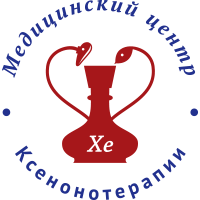Aaron Wong
Supervisor: Dr. Robert Dickinson
Xenon, first discovered in 1898 by Travers and Ramsay, exists in nine isotopes- most abundantly as 132X. It is a by-product of liquid oxygen found in the atmosphere. The distillation process isolating xenon is costly; this poses cost-efficiency issues- slowing down its incorporation into clinical use, despite experimental successes. There has been much concern around xenon1, due to anaesthetic-induced toxicity cases and lack of effective neuroprotective therapies highlighting the need for a replacement.
Xenon Anaesthesia
Xenon’s anaesthetic properties were first observed in 1939 by Behnke, investigating deep sea divers and changes in depth perception associated with changes in their breathing mixtures. In 1946, Lawrence indicated xenon’s narcotic properties in a study involving mice inhalation of xenon and oxygen mixtures4. In 1948, Lazarev confirmed these observations by conducting an experiment on small and adult mice5. 1951 marked the first successful use of xenon’s anaesthetic effects, by Cullen and Gross, on two patients. In this era, ethylene was the anaesthetic more widely used, and comparisons showed xenon’s equivalency.
Lachmann’s 1990 discovery of xenon’s potency and haemodynamic stability demonstrated the safety profile of this anaesthetic- sparking interest around xenon once again- supported by minimal blood pressure fluctuations. Investigations on xenon in 1998, highlighted its inhibitory effect on excitatory NMDA receptors, unlike most general anaesthetics that enhance inhibitory GABAA receptors11. As more research was invested into xenon put it forward as the ideal anaesthetic.
Xenon’s haemodynamic stability is also associated with cardiovascular stability due to norepinephrine uptake inhibition caused by NMDA antagonism12- related to cardioprotective effects, decreasing infarct size- preventing any cases of ischaemia13. Left ventricular function is also maintained, discarding inotropic support requirements for patients under anaesthesia. Combined with the lack of neurotoxic properties14, these factors all contribute to the safety of xenon administration. Xenon’s low solubility allows rapid onset and emergence of its anaesthetic effects15,16 accelerating patient recovery from anaesthesia.
Furthermore, MAC (Minimum alveolar concentration), the particular measure of anaesthetic potency, must be considered. MAC provides an end-point defining the anaesthetic concentration required to prevent movement in response to noxious stimulus in 50% of patients. Defined in 1965 by Eger17, it continues to be relevant clinically18 and is applied in the investigation of xenon. Originally found to be 71% in a study with potential technological limitations19, xenon has demonstrated lower MAC values of 63% using more modern techniques20, indicating greater potency. One experiment showed xenon as more potent than nitrous oxide, an existing anaesthetic, with 40% and 60% MAC-equivalent concentrations of xenon and nitrous oxide, respectively. In another study assessing both anaesthetics at 70% concentration and their synergism with fentany; xenon’s reduced requirement of fentanyl reaffirms xenon potency.
Xenon use can present certain neurotoxic properties, as evident from one study with prolonged exposure of 6 hours23 or >70% xenon showing caspase activation. Although incorrect use can pose dangers, more studies will provide wider coverage of xenon anaesthesia, permitting the consideration of administration methods to maintain xenon advantage and avoid toxicity.
It is slowly being incorporated into modern day medicine in specific situations of critical importance. Xenon has been used in an awake craniotomy, a procedure requiring high concentrations of anaesthetics due to the technique and equipment used (LMA- Laryngeal Mask Airway). Xenon provided potent anaesthesia alongside rapid emergence which proved perfect for the procedure. In this area, xenon showed definite promise suggesting xenon can be incorporated into niche situations where specific anaesthetic characteristics are essential.
Mechanisms of Action
The exact mechanisms by which xenon carries out anaesthesia and neuroprotection are still unknown however it is known that xenon exhibits protein-gas interactions depending on hydrophobicity and volume. The Meyer-Overton Rule explains measure of anaesthetic potency in correlation to its solubility. This has been challenged in more recent studies investigating anaesthetic mechanisms26. Crystallographic studies, investigating xenon mechanism alongside nitrous oxide, used proteins such as urate oxidase27,28 and annexin V27 of similar structural and functional characteristics as xenon’s principal target, NMDA. It was reported that xenon occupancy depended on the hydrophobicity of gas-binding sites, in correspondence with the rule. However, they found in hydrophobicity did not play an important role in occupancy when compared with volume, suggesting a more complex mechanism referring to the association between hydrophobicity and volume, and that a reciprocal binding ability of the binding site and the gas is essential for xenon mechanism of anaesthesia.
Glutamatergic Receptor Sub-Types
NMDA
Xenon antagonises excitatory glutamate receptors, specifically NMDA (N-Methyl-DAspartate) receptors in a study comparing isoflurane and xenon using voltage clamp techniques on cultured rat hippocampal neurons, which eliminates possible confounding effects of communication between neurones. This showed xenon to have no significant effect on GABAA receptors29, which is supported by evidence found in mouse fibroblastic cells11. In this way xenon is different to most anaesthetics, whose primary action is to inhibit GABAergic neurons.
One study showed absence of xenon action on N-type calcium channels indicating presynaptic action, as calcium influx is needed for neurotransmitter release. This suggests xenon mediates antagonism via post-synaptic targets. Furthermore, xenon’s effect on thiol-modified mutant receptor was investigated. This modification causes the channel to remain in an open conformation, allowing inhibition via open channel blockers such as MK80132. Comparatively, xenon showed no inhibition in thiol-modified receptor, ruling out the possibility of an open-channel blockade mechanism33.
The actual mechanism by which xenon carries out NMDA antagonism has been considered but not concluded. The NMDA receptor has two binding sites NR1 and NR2, whose substrates are agonist glutamate and co-agonist glycine- both required for activation34. This highlights the need to investigate mechanisms of xenon action on both binding sites. Studies suggest both non-competitive and competitive mechanisms. The non-competitive mechanisms proposed xenon binding to a site alternative to the active site but still within the channel pore. This may inhibit the channel by causing a blockade-full/partial35. Furthermore, binding of xenon to another site may stabilise closing of the channel and lastly, xenon may bind to the two subunits, decreasing the distance between the two receptor subunits, reducing the size of channel opening36. A study finding xenon inhibition of NMDA increased with decreased glycine concentration indicates the competitive manner of xenon in preventing a full agonist response by glutamate37.
Xenon’s NMDA receptor antagonism led to interest in potential effects as a neuroprotective treatment because hypoxic injury comes from the excessive release of glutamate, causing overactivation of NMDA receptors, coined ‘excitotoxicity’. This leads to greater influx of Ca2+, generating peroxynitrite, resulting in a neuropathological cascade38. The expression of IL1-β (Inter-Leukin1-β) and TNFα (Tumour Necrosis Factor α) contribute to the progression to neuronal cell injury and death39. Xenon has also been found to inhibit calcium ATPase channels40, providing another mechanism of neuroprotection. In brain regions vulnerable to irreversible damage; excitotoxicity can provide adverse complications to the neurological health of any individual- ranging from a neonate to an elderly patient. So, an effective treatment is needed urgently to minimise the costs of handling neurological sequelae and improving quality of life.
Certain NMDA antagonists like nitrous oxide have shown neuroprotective effect to attenuate glutamate-induced cell death41. However they have not been applied clinically due to the coexistence of neurotoxic effects14,42. Contrastingly, xenon use mostly lacks neurotoxicity43. This establishes xenon’s clinical potential as a neuroprotectant. Its safety is supported by another study suggesting neurotoxicity is exerted via dopaminergic pathways, which xenon does not exhibit.
AMPA and Kainate
Little effect on AMPA (α-amino-3-hydroxy-5-methyl-4-isoxazolepropionic acid) receptors has previously been shown in 200029. However more recent studies have shown xenon effect on all three glutamate receptor types: NMDA, AMPA and kainate receptors, indicating xenon may work by a more non-specific action. Research using voltage-clamp technique on cortical neurons shows xenon-inhibition of AMPA-induced peak currents. The possibility of xenon mediating actions on AMPA-induced currents through NMDA receptor was excluded by investigating cross-excitation using known specific NMDA antagonists: Mg2+, MK-801 and ketamine. The reduction of peak sizes indicates more conclusively, xenon’s depressive effect on AMPA receptors. Evidently, actions of xenon are shown to be rapidly reversible providing evidence for rapid emergence of anaesthesia.
Xenon was also found to reduce the size of initial peak currents induced by application of kainate to cortical neurones. Once again, a test to exclude the possibility of cross-excitation via AMPA receptors was carried out using GluR6-transfected cells, whose lack of sensitivity to AMPA renders its use more suitable compared to GluR5.
Studies by Haseneder et al. in 2008 and 2009 reinforced xenon’s effects on AMPA receptors, highlighting that xenon attenuated NMDA-induced and AMPA-induced excitatory post-synaptic currents (EPSC) without affecting GABAA-induced inhibitory post-synaptic currents, by investigating xenon’s post-synaptic targets in the basolateral amygdala45, prefrontal cortex and substantia gelatinosa46. It is important to consider xenon’s effect on different areas of the brain due to varying nerve complexities. In addition, neurotoxicity can also be mediated by non-NMDA pathways, better associated with neuronal swelling and degeneration47. Knowledge of all possible targets for xenon is vital. This will warrant greater understanding of its mechanism of action and may be beneficial in explaining the non-specific actions of xenon.
TREK-1
Xenon targets a two-pore potassium channel domain, more specifically TREK-148 — as no effect is seen in TASK48. This anaesthetic target was discovered in 1988, where a reversible K+ current was induced and maintained by certain anaesthetics49. Their activation by volatile anaesthetics was also found50. TREK-1 controls K+ homeostasis hence modulating electrical membrane potential, contributing to background currents and determining neuronal excitability. TREK-1 is expressed throughout the nervous system51 indicating its significance.
Xenon activation of TREK-1 can increase K+ efflux causing hyperpolarisation at neuronal membranes. This potentially stops the release of a neurotransmitter caused by depolarisation. A more recent study supports this hypothesis using TREK-1 gene deletions in mice, which showed greater resistance to anaesthesia52 when compared to the knockout of other ion receptors- such as GABAA. Furthermore, activation of group 1 metabotropic glutamate receptors inhibits the action of TREK154,55. In this way antagonism of these receptors can exhibit neuroprotective effects.
Heurteaux also found TREK-1 gene deletions causing extreme sensitivity to neuronal excitotoxicity, suggesting its role in dampening and regulating excessive glutamate firing and hyperpolarising the neurone, preventing over-activation at the post-synaptic terminal56- enhancing xenon antagonistic action on the NMDA receptor. Results from this study, combined with the fact that TREK-1 is highly expressed in the hippocampal region of the brain (prone to ischaemic damage), both contribute to argument for the importance of TREK-1 in controlling excitotoxicity.
KATP channels
Xenon had no statistically significant effect on potassium channels in drosophila (fruit-fly) models57. Drosophila models are frequently used to investigate anaesthesia due to their homologous ion channels, conserved across organisms including humans, and potassium levels do not seem to affect anaesthetic effect. However, the role of plasmalemmal KATP channels in neuronal preconditioning and protection in a hypoxic environment is more promising. Bantel et al shows xenon’s action as similar to diazoxide, acting as a plasmalemmal KATP -channel opener (not mitochondrial KATP channel). This presents a possible mechanism for neuroprotection as xenon can also cross the BBB (Blood-Brain Barrier)61. Typical KATP -channel openers tend to have effect on vascular smooth muscle cells62 and its ability to cross the BBB allows greater cerebral blood flow- due to its dilatory effect.
Neuronal Nicotinic Receptors
Two main studies indicate the role of xenon effect on nACh (Nicotinic Acetyl-Choline) receptors, α4β2 and α7 receptors specifically, as those containing β4 subunits do not respond (i.e. α4β4). These two NNR (Neuronal Nicotinic Receptor) subtypes are the most abundant in the mammalian brain. Several studies have shown NNR association with neuroprotection in different situations such as in vitro models of ischaemia67 and rats modelling kainate-induced neurotoxicity68 and glutamateinduced excitotoxicity69. Studies highlight the α7 subtype association with neuroprotection, most prominently by its gene deletion abolishing neuroprotection by nicotine67. Both the α4 and α7 receptors inhibit apoptosis of neuronal cells70 hence; NNRs provide a plausible target for xenon neuroprotection.



